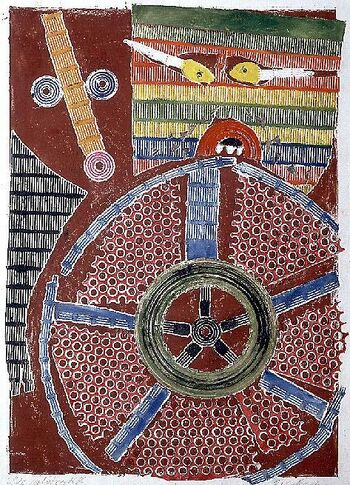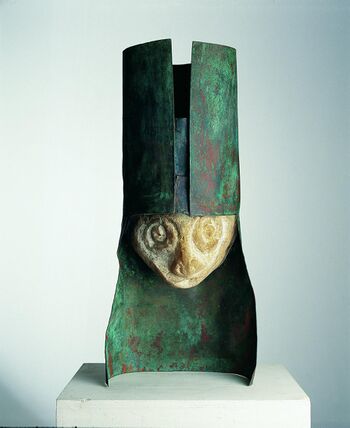Rolf Nesch


Born in Germany, he moved to Norway following the Nazi takeover in 1933. Inspired by scenery and working life there, he discarded canvas and paintbrushes [1] for good, and turned to printmaking. He developed his own techniques for metal prints [2] and so-called Snegraffik [material pictures] [3], for which he used a range of materials: metal plates, copper wire, wood, stone, glass, mica, rope, nails, and so on.
His metal prints include Elbe Bridge I (1932), Snow (1934) in a series of 20 (black and white), 21 metal prints of fisheries off the Lofoten Islands (1936) [4], 10 metal prints inspired by poems of Henrik Rytter (1937); the six-part Herring Catch (1938) inspired by the spring herring catch off Måløy; Beach Scenes (1939), a colour series of 18; and others.
Material pictures [Snegrafikk]: Double Lion of Babylon (1934), Reclining Woman (1934), both large zinc plates with metal wire soldered to them; the three-part Music (1934-35); the high relief and abstracted figures of Peace (1935-36) whose theme is the 1915 Eastern Front; Lovers (1935-36).
He also created distinctive sculptures, mostly figures in stone and bronze [5].
1938 saw his first exhibition of material pictures, held at the premises of Kunstnerforbundet in Oslo.
Nesch's metal-plate technique is described by Sidsel Helliesen of the National Museum; Eivind Otto Hjelle writes about his material pictures.
His work provided inspiration for the abstract artist Olav Strømme and many other Norwegian Modernists in the 1930s.
- See also